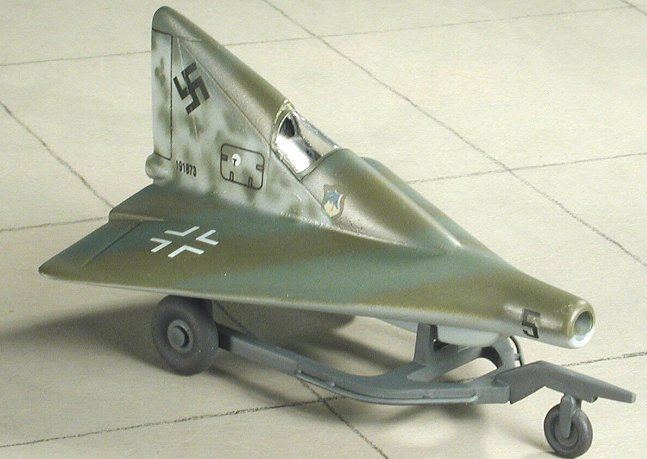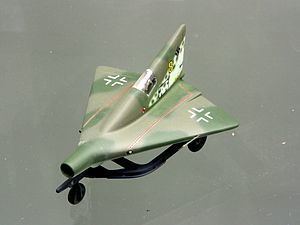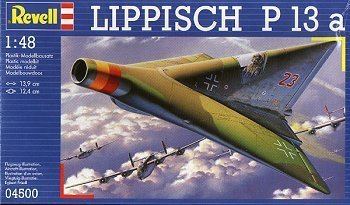Top speed 1,650 km/h Wingspan 6.02 m | Range 1,000 km Length 6.7 m Manufacturer Messerschmitt | |
 | ||
The Lippisch P.13a was an experimental ramjet-powered delta wing interceptor aircraft designed in late 1944 by Dr. Alexander Lippisch for Nazi Germany. The aircraft never made it past the drawing board, but testing of wind-tunnel models in the DVL high-speed wind tunnel showed that the design had extraordinary stability into the Mach 2.6 range.
Contents

Design and development
As conventional fuels were in extremely short supply by late 1944, Lippisch proposed that the P.13a be powered by coal. Initially, it was proposed that a wire-mesh basket holding coal be mounted behind a nose air intake, protruding slightly into the airflow and ignited by a gas burner. Following wind-tunnel testing of the ramjet and the coal basket, modifications were incorporated to provide more efficient combustion.

The coal was to take the form of small granules instead of irregular lumps, to produce a controlled and even burn, and the basket was altered to a mesh drum revolving on a vertical axis at 60 rpm. A jet of flame from tanks of bottled gas would fire into the basket once the P.13a had reached operating speed (above 320 km/h), whether by using a rocket to assist takeoff or by being towed.

The air passing through the ramjet would take the fumes from the burning coal towards the rear where they would mix under high pressure with clean air taken from a separate intake. The resulting mixture of gas would then be directed out through a rear nozzle to provide thrust. A burner and drum were built and tested successfully in Vienna by the design team before the end of the war.

It is not known what armament would have been carried by the P.13a; the MK 103 cannon would have been too heavy and large for such a small aircraft and it is possible that one or two large-calibre machineguns would have been used.

At the end of the war even the prototype DM-1 test glider had not been finished when it was captured by American forces. The Americans ordered Lippisch's team to complete the glider, and it was then shipped to the United States where it was test-flown. According to the National Advisory Committee for Aeronautics the results were positive and lessons learned were incorporated into NASA's research aircraft of the 1950s and on.
Film footage exists which shows a gliding test of a scaled-down model of the P.13a. These tests began in May 1944 at Spitzerberg, near Vienna.
Variants
The P.13a was completely unrelated to the 1942 project for a high-speed bomber aircraft, but similarly named P.13.
Specifications (P.13a, as designed)
General characteristics
Performance
Replicas
There is a Replica at The Military Aviation Museum in Virginia Beach, Virginia located in the Cottbus hangar
